Artificial intelligence has revolutionized photo editing, turning once-complex tasks into quick, creative, and accessible processes for everyone from hobbyists to professional photographers. In 2025, AI photo editors are more powerful and intuitive than ever, offering everything from one-click enhancements to generative art creation. This comprehensive guide explores the top AI photo editors of 2025, their standout features, strengths, weaknesses, and how to choose the right tool for your needs.
Why AI Photo Editors Matter in 2025
AI photo editors leverage machine learning to automate and enhance traditional editing workflows. These tools can:
Instantly remove backgrounds or unwanted objects
Upscale and restore low-resolution images
Apply complex retouching (skin smoothing, body reshaping)
Generate new content from text prompts
Learn and mimic your editing style
The result is a dramatic boost in efficiency and creativity, making high-quality editing accessible to all skill levels.
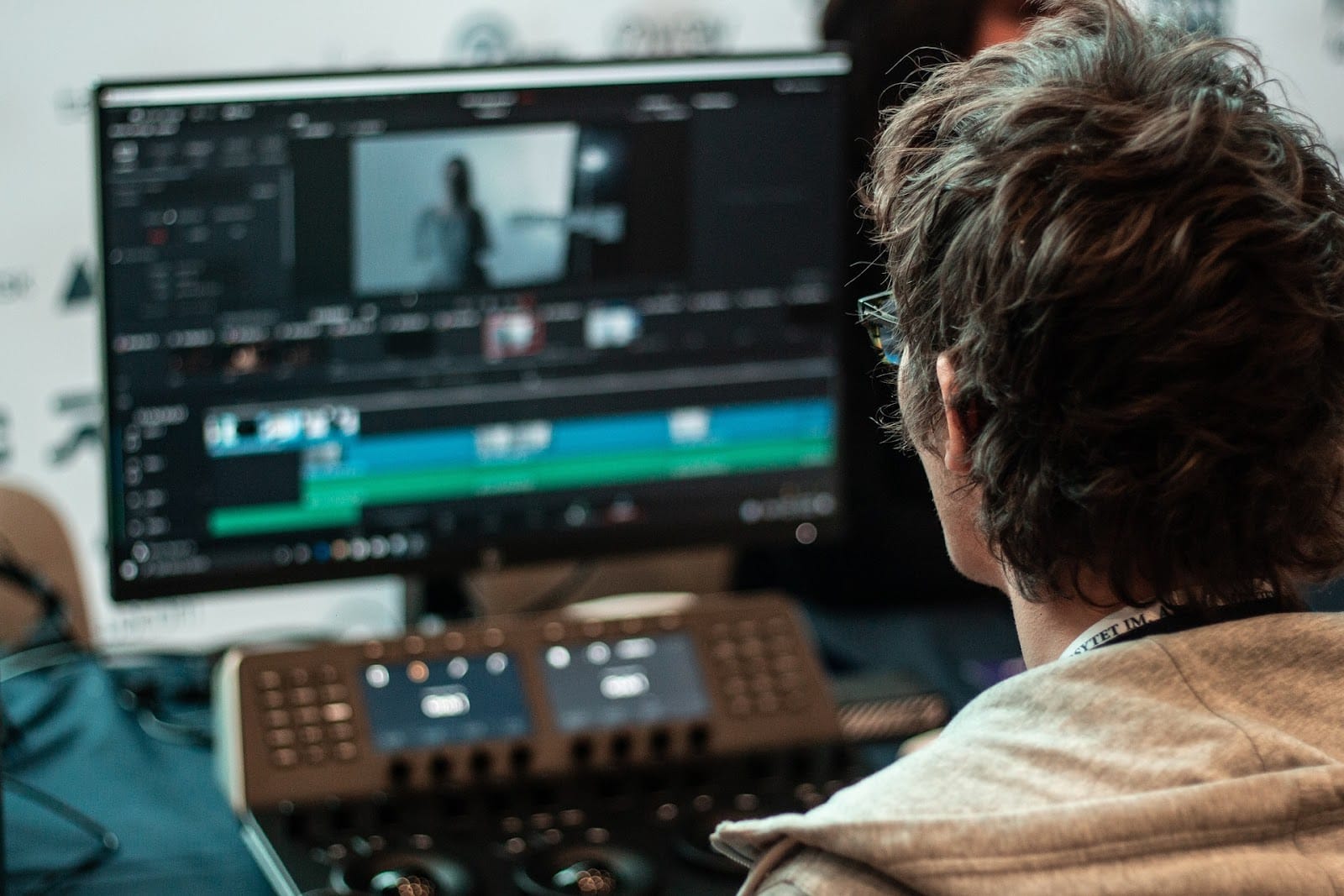
Top AI Photo Editors of 2025
Below, we break down the leading AI photo editors, highlighting what makes each unique.
1. Adobe Photoshop CC

Best for: Professional photo editing, design, and generative AI
Adobe Photoshop remains the industry gold standard, continually evolving with cutting-edge AI features. In 2025, Photoshop’s integration of Adobe Firefly brings generative fill and image creation directly into the core workflow. Users can now add, remove, or extend elements in photos using simple text prompts, making complex edits achievable in seconds.
Key AI Features:
Generative Fill & Expand: Create or extend images with text prompts
Advanced Selection & Masking: AI-powered tools for precise object isolation
Content-Aware Fill: Seamlessly removes or replaces objects
Neural Filters: One-click enhancements and creative effects
Integration with Adobe Cloud: Enables collaboration and cross-app workflows
Pros:
Unmatched versatility and power
Seamless integration with other Adobe apps
Constantly updated with new AI features
Cons:
Subscription-based pricing can be expensive
Steeper learning curve for beginners
Who Should Use It: Professionals and serious enthusiasts who demand the most comprehensive toolset and creative control.
2. Luminar Neo
Best for: Intuitive AI editing, creative enhancements, and landscape/portrait work
Luminar Neo has emerged as a favorite for photographers seeking powerful AI tools in a user-friendly package. Its suite of features-like AI-powered sky replacement, portrait retouching, and relighting-make it easy to achieve dramatic results with minimal effort.
Key AI Features:
RelightAI: Adjust lighting in 3D space for realistic enhancements
Portrait Background Removal: One-click subject isolation
Sky Replacement: Instantly swap skies with AI
Powerline & Dust Spot Removal: Clean up images automatically
RAW Support & Batch Processing: Professional-grade workflow
Pros:
Intuitive interface, suitable for all skill levels
Unique AI tools for creative effects
One-time purchase option (no subscription)
Cons:
Some operations can be slow
Lacks advanced organizational tools
Who Should Use It: Beginners to advanced users who want quick, creative edits without the complexity of Photoshop.
3. Topaz Photo AI
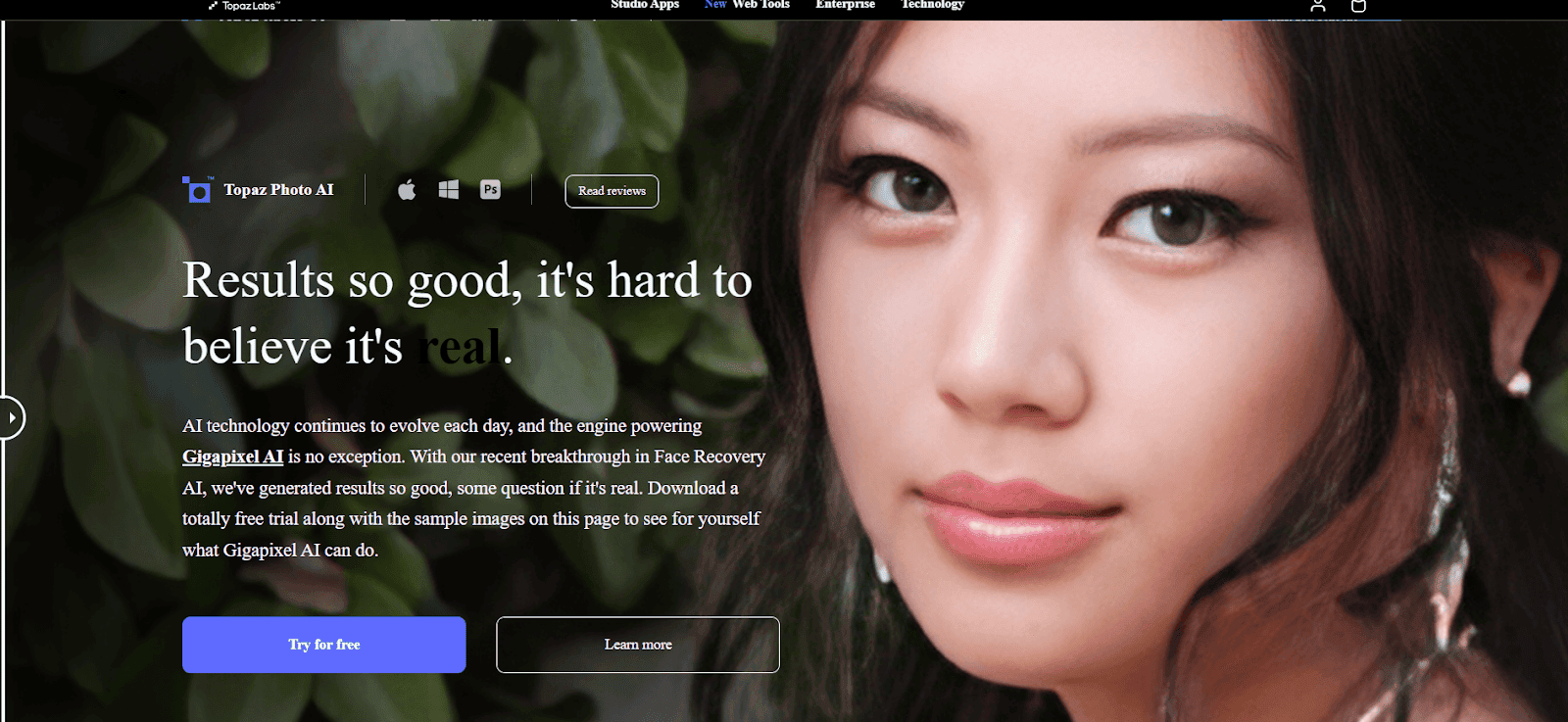
Best for: Image quality enhancement, noise reduction, sharpening, and upscaling
Topaz Photo AI specializes in improving image quality, consolidating the best of Topaz Labs’ DeNoise, Sharpen, and Gigapixel AI into a single platform. Its Autopilot feature analyzes images and applies optimal enhancements automatically.
Key AI Features:
Autopilot: Automatic detection and optimization of sharpness, noise, and resolution
Image Upscaling: Enlarge photos up to 600% without loss of detail
Noise Reduction: Removes grain while preserving details
Sharpening: Recovers focus in soft or blurry images
Pros:
Excellent for restoring and enhancing old or low-quality images
Batch processing saves time
Specialized AI models for different image types
Cons:
Occasional bugs and crashes reported
Not as versatile for creative editing as Photoshop or Luminar
Who Should Use It: Photographers needing to rescue, restore, or enlarge images with minimal manual intervention.
4. Corel PaintShop Pro

Best for: Affordable, full-featured editing without a subscription
PaintShop Pro offers a robust set of AI-powered tools at a lower price point than Adobe’s offerings. It supports both raster and vector editing, making it a versatile choice for photographers and designers alike.
Key AI Features:
AI Background Replacement: Swap backgrounds in one click
AI Portrait Mode & Style Transfer: Artistic effects and portrait enhancements
AI Upsampling & Denoise: Improve resolution and reduce noise
Focus Stacking: Blend multiple images for greater depth of field
Pros:
No subscription required; one-time purchase
Supports a wide range of file formats
Regular updates with new AI features
Cons:
The interface is less polished than Adobe’s
Some advanced features lag behind Photoshop
Who Should Use It: Users seeking powerful editing tools without ongoing costs, or those who want both vector and raster editing in one app.
5. PhotoDirector by Cyberlink

Best for: Creative effects, portrait retouching, and AI-powered enhancements
PhotoDirector is known for its creative AI tools, including cartoon effects, body reshaping, and concept art generation. It’s ideal for users who want to experiment with unique looks and social media-ready edits.
Key AI Features:
AI Object Removal & Background Change
Portrait Retouching: Wrinkle removal, body reshaping
AI Art Generation: Turn photos into concept art or cartoons
Noise & Blur Removal
Pros:
Wide range of creative effects
Simple, accessible interface
Cons:
Some features are less precise than pro-level tools
Occasional processing slowdowns with complex edits
Who Should Use It: Social media creators, portrait photographers, and anyone who enjoys creative experimentation.
6. Imagen
Best for: Automated culling, personalized editing profiles, and workflow automation
Imagen uses AI to automate tedious tasks like culling (removing duplicates, blurry, or poorly composed images) and can learn your editing style for consistent results. It’s especially valuable for event and wedding photographers dealing with large volumes of images.
Key AI Features:
Automatic Culling: Filters out subpar images
Personalized Editing: Learns and mimics your editing style
Talent AI Profiles: Access editing styles from top photographers
Batch Editing & Cropping
Pros:
Dramatically speeds up workflow
Consistent results across large photo sets
Cons:
Requires time to train on your editing style
Less flexible for creative, one-off edits
Who Should Use It: High-volume photographers (weddings, events) who need fast, consistent results.
7. Aftershoot
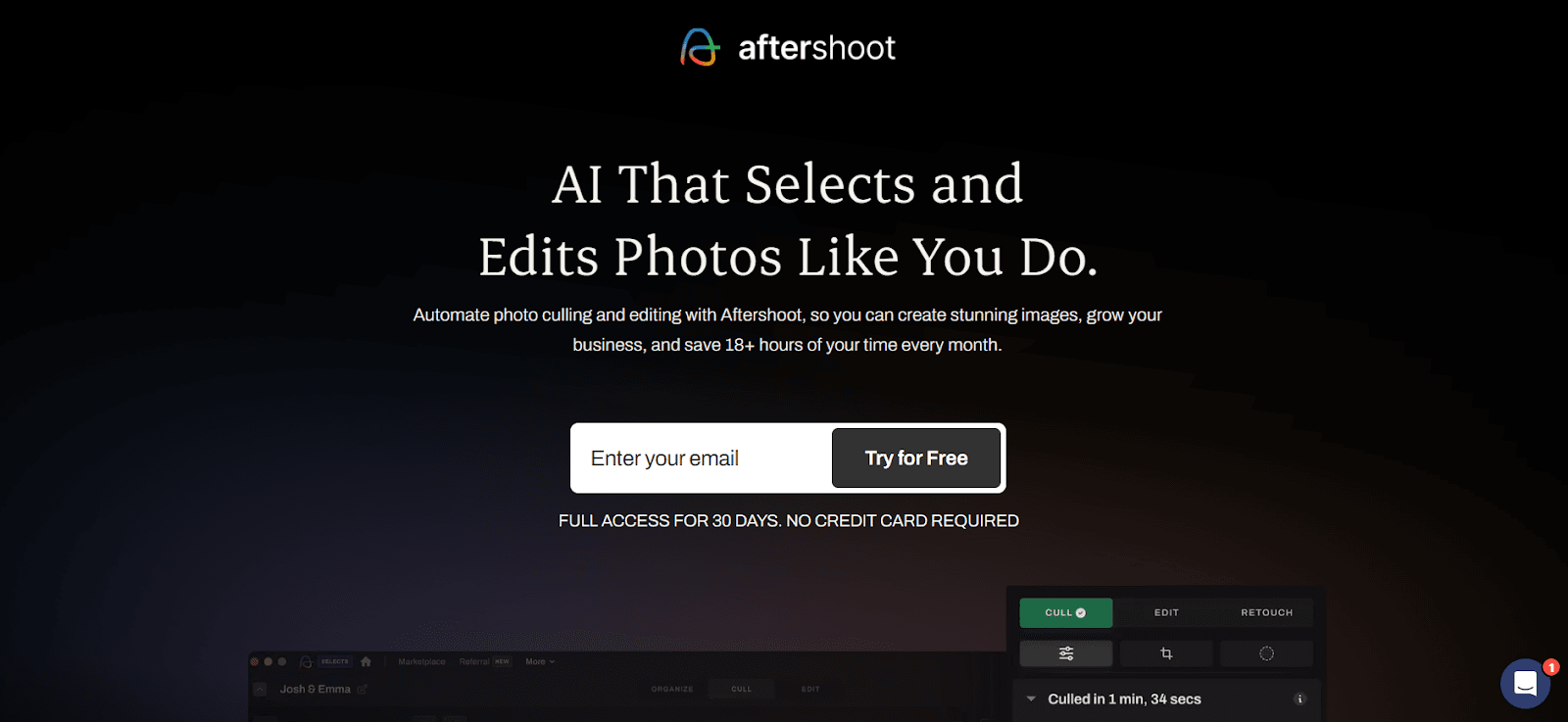
Best for: Fast culling and automated editing for photographers
Aftershoot is an AI-powered tool designed to streamline the photo selection and editing process. It can analyze thousands of images, flagging the best shots and even applying edits that match your style.
Key AI Features:
Smart Culling: Detects composition, blur, closed eyes, and emotion
AI Editing: Learns from your Lightroom or Capture One edits
Offline Functionality: Works without internet access
Pros:
Incredibly fast culling and editing
Learns and adapts to your preferences
Cons:
Editing options are less advanced than Photoshop or Luminar
Who Should Use It: Professional photographers with large shoots who want to minimize manual sorting and editing.
8. Fotor AI Editor
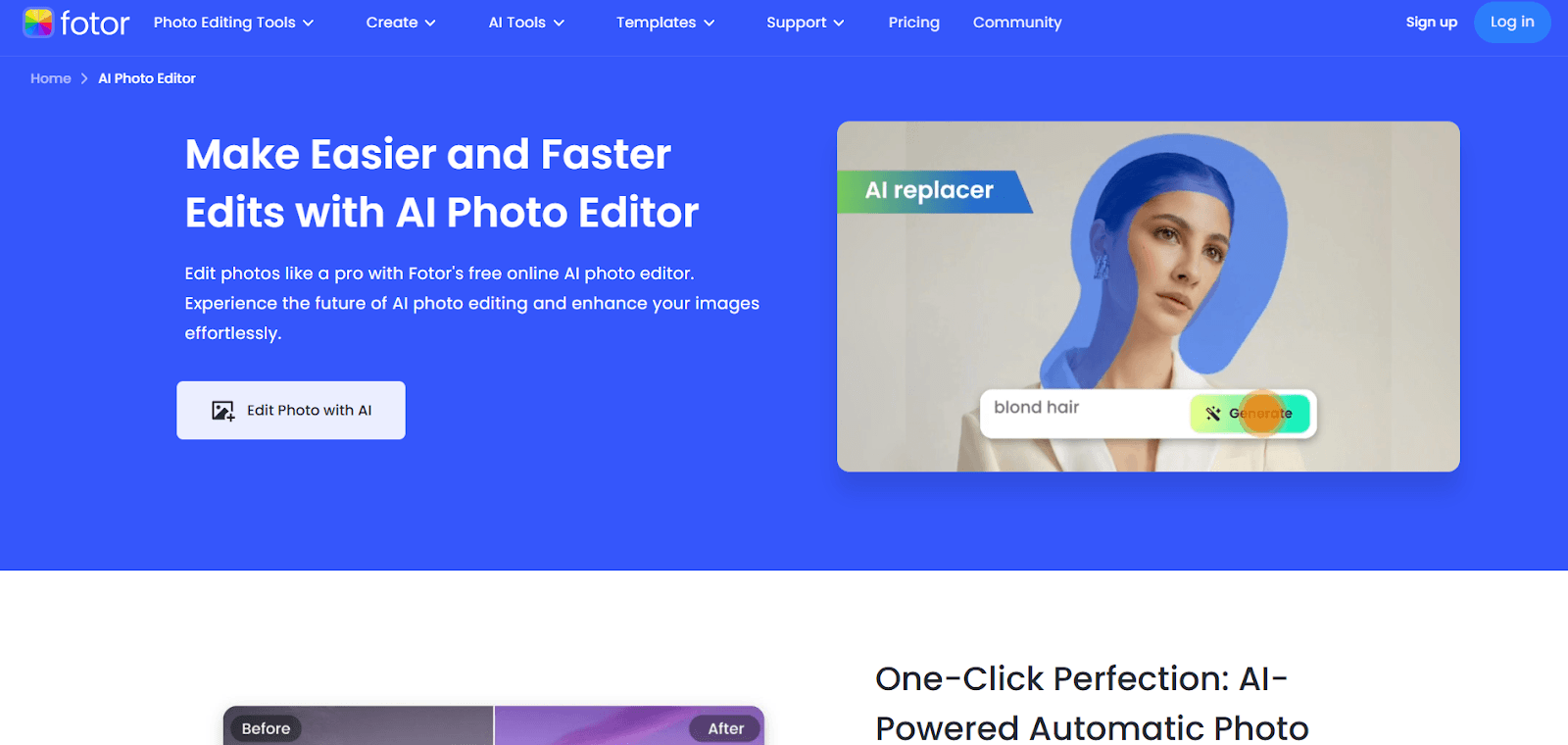
Best for: Quick, accessible AI-powered edits and batch processing
Fotor provides a suite of AI tools for both basic and creative edits, including batch processing, portrait retouching, and automated photo restoration.
Key AI Features:
Batch Editing: Resize, crop, and retouch multiple images at once
AI Portrait Retouching: Automatic face detection and enhancement
AI Outpainting: Expands images with content-aware fill
Pros:
Easy to use, even for beginners
Fast batch processing
Cons:
Lacks advanced manual controls for professionals
Who Should Use It: Casual users and social media creators needing quick, polished results.
Comparison Table: Top AI Photo Editors 2025
| Editor | Best For | Key AI Features | Pricing Model | Skill Level |
| Photoshop | Pro editing, generative AI | Generative Fill, Neural Filters | Subscription | Advanced |
| Luminar Neo | Creative, intuitive editing | Sky Replacement, RelightAI | One-time/license | All levels |
| Topaz Photo AI | Image enhancement/restoration | Noise Reduction, Upscaling | One-time/license | All levels |
| PaintShop Pro | Affordable, full-featured edits | AI Background Replace, Style Trans | One-time/license | All levels |
| PhotoDirector | Creative effects, portraits | AI Art, Portrait Retouch | Subscription/One-time | Beginner-Intermediate |
| Imagen | Workflow automation | AI Culling, Personalized Edits | Subscription | Pro |
| Aftershoot | Fast culling & editing | Smart Culling, AI Editing | Subscription | Pro |
| Fotor AI Editor | Quick, batch edits | Batch AI Retouch, Outpainting | Freemium | Beginner |
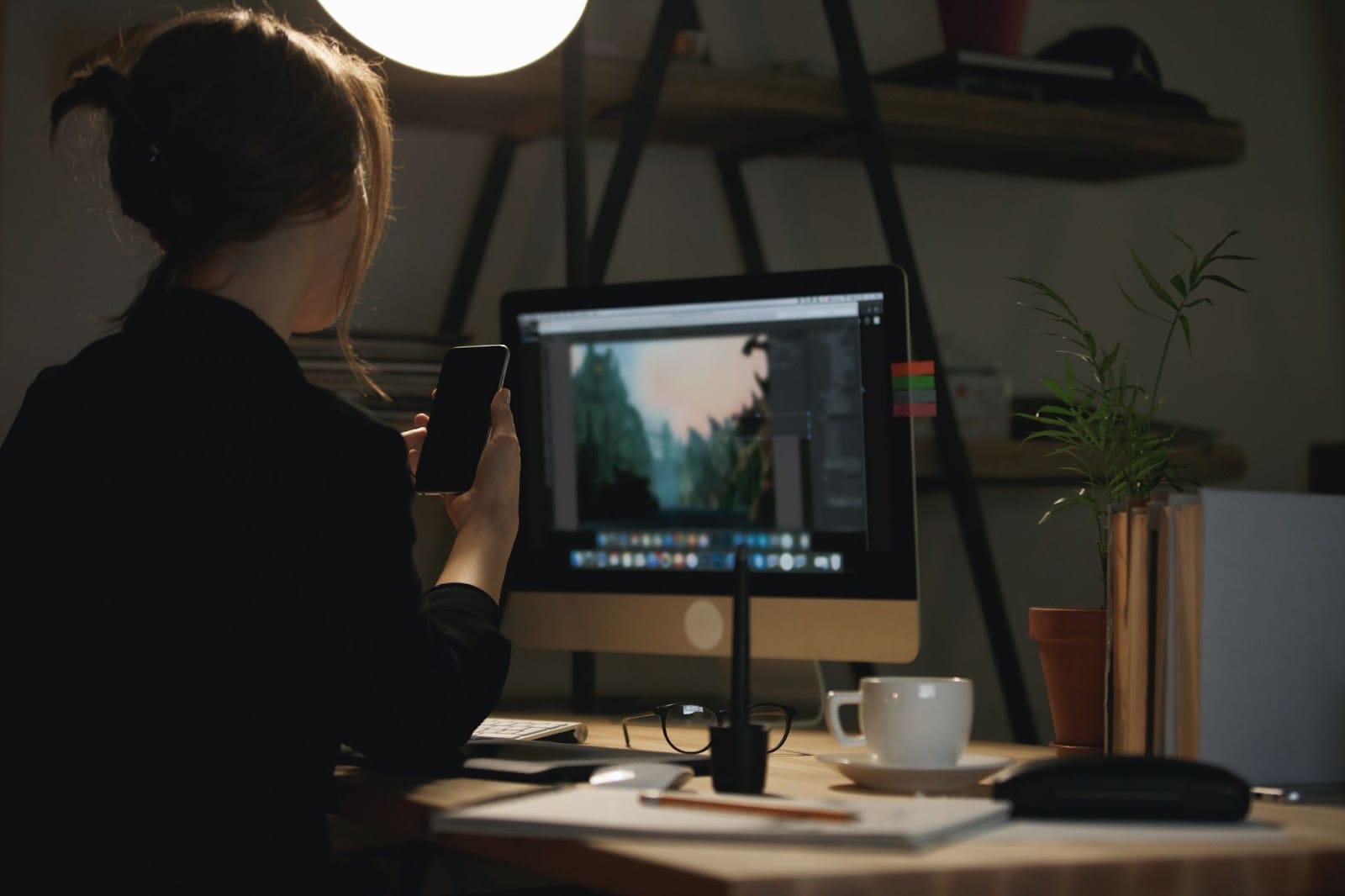
How to Choose the Right AI Photo Editor
Consider the following when choosing:
Skill Level: Beginners may prefer Luminar Neo or Fotor, while professionals will benefit most from Photoshop or Imagen.
Type of Work: High-volume photographers should look for culling and batch editing (Imagen, Aftershoot). Creatives may want generative tools (Photoshop, PhotoDirector).
Budget: PaintShop Pro and Luminar Neo offer strong features without subscriptions. Photoshop and Image require ongoing fees.
Specific Needs: For restoration and upscaling, Topaz Photo AI is unmatched. For creative effects, PhotoDirector and Luminar Neo excel.
Future of AI Photo Editing
AI photo editors in 2025 are not just about speed- they unlock new creative possibilities and democratize advanced editing. As AI continues to advance, expect even more seamless integration, smarter automation, and creative features that push the boundaries of what’s possible in photography.
Whether you’re a professional seeking the ultimate in control or a hobbyist wanting quick, beautiful results, there’s an AI photo editor tailored for you. The best approach? Try a few, explore their unique strengths, and discover how AI can elevate your photography in ways you never imagined.


